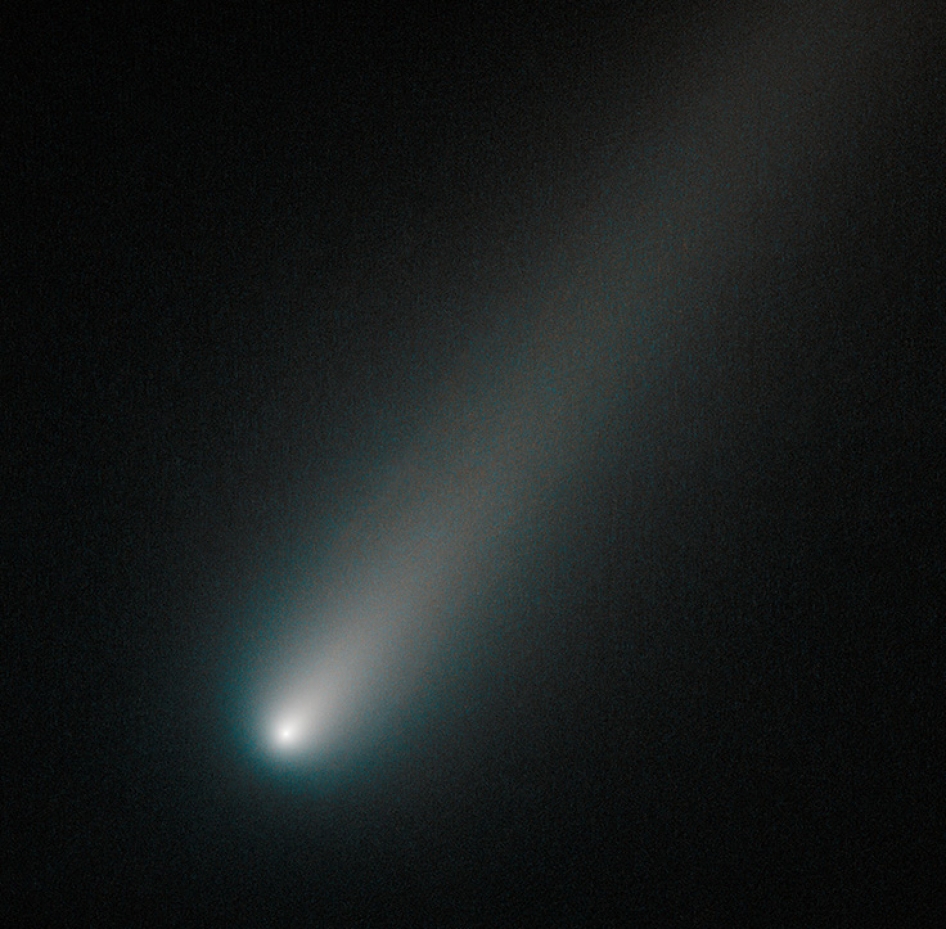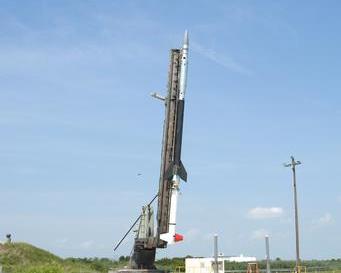UPDATE: The FORTIS payload was successfully launched this morning to observe Comet ISON. Launched on a Black Brant IX sounding rocket at 6:40:01 a.m. EST, November 20, the payload flew to an altitude of 172 miles before descending via parachute at White Sands. Preliminary reports show that good data was obtained and the mission was a success. Payload recovery is in progress.
UPDATE: The FORTIS launch to observe Comet ISON has been rescheduled for the morning of Nov. 20, 2013. A technical issue with the payload resulted in postponing the launch this morning at the White Sands Missile Range in N.M.
In an example of an extremely tight turnaround, a NASA-funded team has spent six months preparing for a mid-November launch to observe Comet ISON during a six-minute sounding rocket flight. The Far-ultraviolet Off Rowland-circle Telescope for Imaging and Spectroscopy, or FORTIS, was originally designed – and flew for the first time in May 2013 — to measure the presence of different atoms in far away galaxies. However, the telescope happens to also be well-tuned to study carbon monoxide, hydrogen, oxygen, and other interesting atoms expected on Come ISON as well, so the team sought funding from NASA to quickly launch it again.
“FORTIS took its first flight in May,” said Stephan McCandliss, the Fortis Principal Investigator at The Johns Hopkins University in Baltimore, Md. “We knew we were going to rebuild the instrument and fly it again, regardless – it was just a question of how fast. When our proposal to use FORTIS to look at ISON in November was accepted, we started working our tails off.”
Catalogued as C/2012 S1, Comet ISON was first spotted 585 million miles away in September 2012 and it is now travelling toward the sun at a whopping 48,000 mph. The comet will make its closest approach to the sun on Nov. 28, 2013. This is the comet’s very first trip around the sun. It is thought to be made of pristine matter from the earliest days of the solar system’s formation, its top layers never having been lost by a trip near the sun. Scientists have been pointing as many ground-based observatories as they can and at least 15 space-based assets towards the comet along the way, in order to learn more about this time capsule from when the solar system first formed.
FORTIS will be able to look at the molecules and atoms inside the comet by taking advantage of the fact that, as the comet moves toward the sun and warms, its rate of sublimation (a process similar to evaporation in which solid matter transitions directly into gas) increases. FORTIS will observe that gas with an instrument called a spectrograph, which can separate incoming light into its component wavelengths. The intensity of light at each wavelength, in turn, corresponds to the sublimation rate of certain atoms. A series of shutters open and close throughout flight to allow the instrument to gather information from several areas at once: different parts of a galaxy, for example, or in this case different parts of the comet.
“Hubble has an instrument that could look for these same atoms, but Hubble can’t look this close to the sun,” said McCandliss. “So we are in a really unique situation where we can capture observations of this material coming off the comet at a point where heating from the sun is getting stronger and stronger.”
FORTIS will launch from White Sands Missile Range in New Mexico, and will soar up above 60 miles high, where it will be above much of Earth’s atmosphere, which would interfere with the detection of cometary emissions at far-ultraviolet wavelengths. FORTIS is flying an autonomous targeting system that will locate the center of the comet on the fly and then deploy a pre-programed array of the instrument’s microshutters, in order to observer 43 different locations in the comet. Overall, FORTIS will sample a region approximately 625,000 miles in diameter. This system, designed by former Johns Hopkins University graduate student Brian Fleming, uses a prototype of the microshutter arrays built by NASA’s Goddard Space Flight Center in Greenbelt, Md. for the Near Infrared Spectrograph on the James Webb Space Telescope. When the instrument comes back down to the ground, the team will recover it and should be able to use it again down the road.
Such short flights are a signature of NASA’s sounding rocket program, which launches inexpensive missions to gather robust science results while providing the chance to build and improve newer scientific instruments. Such flexibility of timing and cost is what allowed the FORTIS team to fly on such a short turnaround after its first flight – which included a bumpy landing leading to some needed repairs.
The window for the FORTIS launch begins on Nov. 19, 2013, just nine days before ISON sling shots around the sun to travel back out into space, unlikely to ever return. Indeed, the comet may not even survive the trip around the sun where it could break up and fizzle out completely. But before that happens, FORTIS will join a world-wide contingent of observatories trying to understand this early bit of our solar system’s history.
Karen C. Fox
NASA’s Goddard Space Flight Center, Greenbelt, Md.































